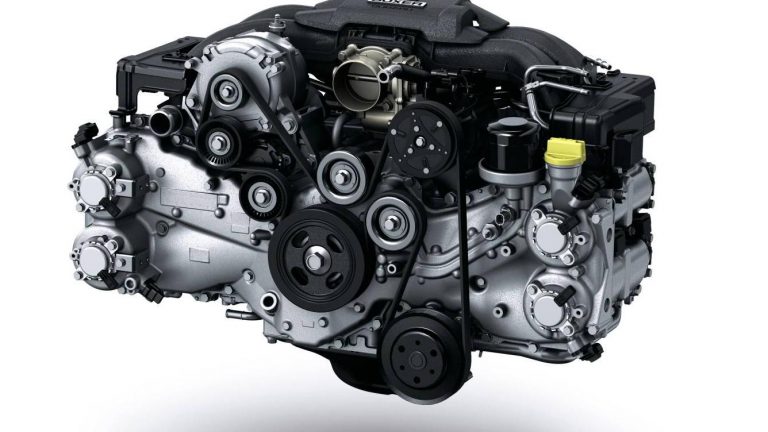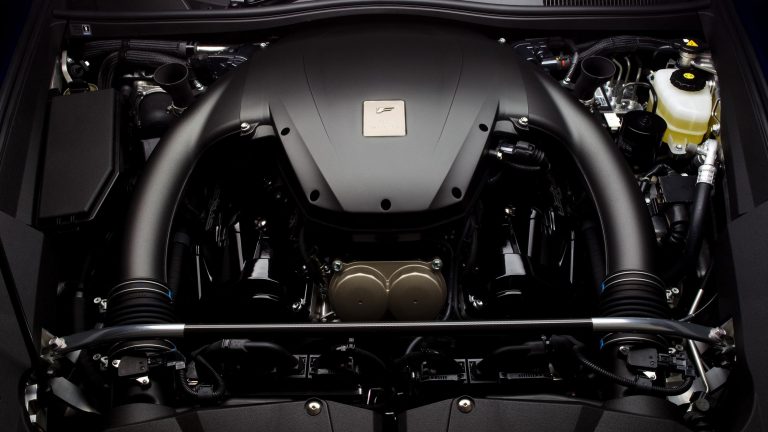[su_image_carousel source=”media: 51028,51029,51003,51004,51005″]
Introduction
The FA20D engine was a 2.0-litre horizontally-opposed (or ‘boxer’) four-cylinder petrol engine that was manufactured at Subaru’s engine plant in Ota, Gunma. The FA20D engine was introduced in the Subaru BRZ and Toyota ZN6 86; for the latter, Toyota initially referred to it as the 4U-GSE before adopting the FA20 name.
Key features of the FA20D engine included it:
- Open deck design (i.e. the space between the cylinder bores at the top of the cylinder block was open);
- Aluminium alloy block and cylinder head;
- Double overhead camshafts;
- Four valves per cylinder with variable inlet and exhaust valve timing;
- Direct and port fuel injection systems;
- Compression ratio of 12.5:1; and,
- 7450 rpm redline.
[su_table responsive=”yes”]
| Model | Engine | Trans. | Power | Torque | Years |
|---|---|---|---|---|---|
| Subaru Z1 BRZ | 2.0-litre petrol F4 | 6sp man., 6sp auto |
147kW at 7000rpm | 205Nm at 6400-6600rpm | 2012-on |
[/su_table]
FA20D block
The FA20D engine had an aluminium alloy block with 86.0 mm bores and an 86.0 mm stroke for a capacity of 1998 cc. Within the cylinder bores, the FA20D engine had cast iron liners.
Cylinder head: camshaft and valves
The FA20D engine had an aluminium alloy cylinder head with chain-driven double overhead camshafts. The four valves per cylinder – two intake and two exhaust – were actuated by roller rocker arms which had built-in needle bearings that reduced the friction that occurred between the camshafts and the roller rocker arms (which actuated the valves). The hydraulic lash adjuster – located at the fulcrum of the roller rocker arm – consisted primarily of a plunger, plunger spring, check ball and check ball spring. Through the use of oil pressure and spring force, the lash adjuster maintained a constant zero valve clearance.
Valve timing: D-AVCS
To optimise valve overlap and utilise exhaust pulsation to enhance cylinder filling at high engine speeds, the FA20D engine had variable intake and exhaust valve timing, known as Subaru’s ‘Dual Active Valve Control System’ (D-AVCS).
For the FA20D engine, the intake camshaft had a 60 degree range of adjustment (relative to crankshaft angle), while the exhaust camshaft had a 54 degree range. For the FA20D engine,
- Valve overlap ranged from -33 degrees to 89 degrees (a range of 122 degrees);
- Intake duration was 255 degrees; and,
- Exhaust duration was 252 degrees.
[su_table responsive=”yes”]
| FA20D valve timing | ||
|---|---|---|
| Intake | Open | -24° to 44° BTDC |
| Close | 99° to 31° ABDC | |
| Exhaust | Open | 81° to 27° BBDC |
| Close | -9° to 45° ATDC | |
[/su_table]The camshaft timing gear assembly contained advance and retard oil passages, as well as a detent oil passage to make intermediate locking possible. Furthermore, a thin cam timing oil control valve assembly was installed on the front surface side of the timing chain cover to make the variable valve timing mechanism more compact. The cam timing oil control valve assembly operated according to signals from the ECM, controlling the position of the spool valve and supplying engine oil to the advance hydraulic chamber or retard hydraulic chamber of the camshaft timing gear assembly.
To alter cam timing, the spool valve would be activated by the cam timing oil control valve assembly via a signal from the ECM and move to either the right (to advance timing) or the left (to retard timing). Hydraulic pressure in the advance chamber from negative or positive cam torque (for advance or retard, respectively) would apply pressure to the advance/retard hydraulic chamber through the advance/retard check valve. The rotor vane, which was coupled with the camshaft, would then rotate in the advance/retard direction against the rotation of the camshaft timing gear assembly – which was driven by the timing chain – and advance/retard valve timing. Pressed by hydraulic pressure from the oil pump, the detent oil passage would become blocked so that it did not operate.
When the engine was stopped, the spool valve was put into an intermediate locking position on the intake side by spring power, and maximum advance state on the exhaust side, to prepare for the next activation.
Intake and throttle
The intake system for the Toyota ZN6 86 andSubaru Z1 BRZ included a ‘sound creator’, damper and a thin rubber tube to transmit intake pulsations to the cabin. When the intake pulsations reached the sound creator, the damper resonated at certain frequencies. According to Toyota, this design enhanced the engine induction noise heard in the cabin, producing a ‘linear intake sound’ in response to throttle application.
In contrast to a conventional throttle which used accelerator pedal effort to determine throttle angle, the FA20D engine had electronic throttle control which used the ECM to calculate the optimal throttle valve angle and a throttle control motor to control the angle. Furthermore, the electronically controlled throttle regulated idle speed, traction control, stability control and cruise control functions.
Port and direct injection
The FA20D engine had:
- A direct injection system which included a high-pressure fuel pump, fuel delivery pipe and fuel injector assembly; and,
- A port injection system which consisted of a fuel suction tube with pump and gauge assembly, fuel pipe sub-assembly and fuel injector assembly.
Based on inputs from sensors, the ECM controlled the injection volume and timing of each type of fuel injector, according to engine load and engine speed, to optimise the fuel:air mixture for engine conditions. According to Toyota, port and direct injection increased performance across the revolution range compared with a port-only injection engine, increasing power by up to 10 kW and torque by up to 20 Nm.
As per the table below, the injection system had the following operating conditions:
- Cold start: the port injectors provided a homogeneous air:fuel mixture in the combustion chamber, though the mixture around the spark plugs was stratified by compression stroke injection from the direct injectors. Furthermore, ignition timing was retarded to raise exhaust gas temperatures so that the catalytic converter could reach operating temperature more quickly;
- Low engine speeds: port injection and direct injection for a homogenous air:fuel mixture to stabilise combustion, improve fuel efficiency and reduce emissions;
- Medium engine speeds and loads: direct injection only to utilise the cooling effect of the fuel evaporating as it entered the combustion chamber to increase intake air volume and charging efficiency; and,
- High engine speeds and loads: port injection and direct injection for high fuel flow volume.

The FA20D engine used a hot-wire, slot-in type air flow meter to measure intake mass – this meter allowed a portion of intake air to flow through the detection area so that the air mass and flow rate could be measured directly. The mass air flow meter also had a built-in intake air temperature sensor.
The FA20D engine had a compression ratio of 12.5:1.
Ignition
The FA20D engine had a direct ignition system whereby an ignition coil with an integrated igniter was used for each cylinder. The spark plug caps, which provided contact to the spark plugs, were integrated with the ignition coil assembly.
The FA20D engine had long-reach, iridium-tipped spark plugs which enabled the thickness of the cylinder head sub-assembly that received the spark plugs to be increased. Furthermore, the water jacket could be extended near the combustion chamber to enhance cooling performance. The triple ground electrode type iridium-tipped spark plugs had 60,000 mile (96,000 km) maintenance intervals.
The FA20D engine had flat type knock control sensors (non-resonant type) attached to the left and right cylinder blocks.
Exhaust and emissions
The FA20D engine had a 4-2-1 exhaust manifold and dual tailpipe outlets. To reduce emissions, the FA20D engine had a returnless fuel system with evaporative emissions control that prevented fuel vapours created in the fuel tank from being released into the atmosphere by catching them in an activated charcoal canister.
FA20D Problems
Uneven idle and stalling
For the Subaru BRZ and Toyota 86, there have been reports of
- varying idle speed;
- rough idling;
- shuddering; or,
- stalling
that were accompanied by
- the ‘check engine’ light illuminating; and,
- the ECU issuing fault codes P0016, P0017, P0018 and P0019.
Initially, Subaru and Toyota attributed these symptoms to the VVT-i/AVCS controllers not meeting manufacturing tolerances which caused the ECU to detect an abnormality in the cam actuator duty cycle and restrict the operation of the controller. To fix, Subaru and Toyota developed new software mapping that relaxed the ECU’s tolerances and the VVT-i/AVCS controllers were subsequently manufactured to a ‘tighter specification’.
There have been cases, however, where the vehicle has stalled when coming to rest and the ECU has issued error codes P0016 or P0017 – these symptoms have been attributed to a faulty cam sprocket which could cause oil pressure loss. As a result, the hydraulically-controlled camshaft could not respond to ECU signals. If this occurred, the cam sprocket needed to be replaced.



